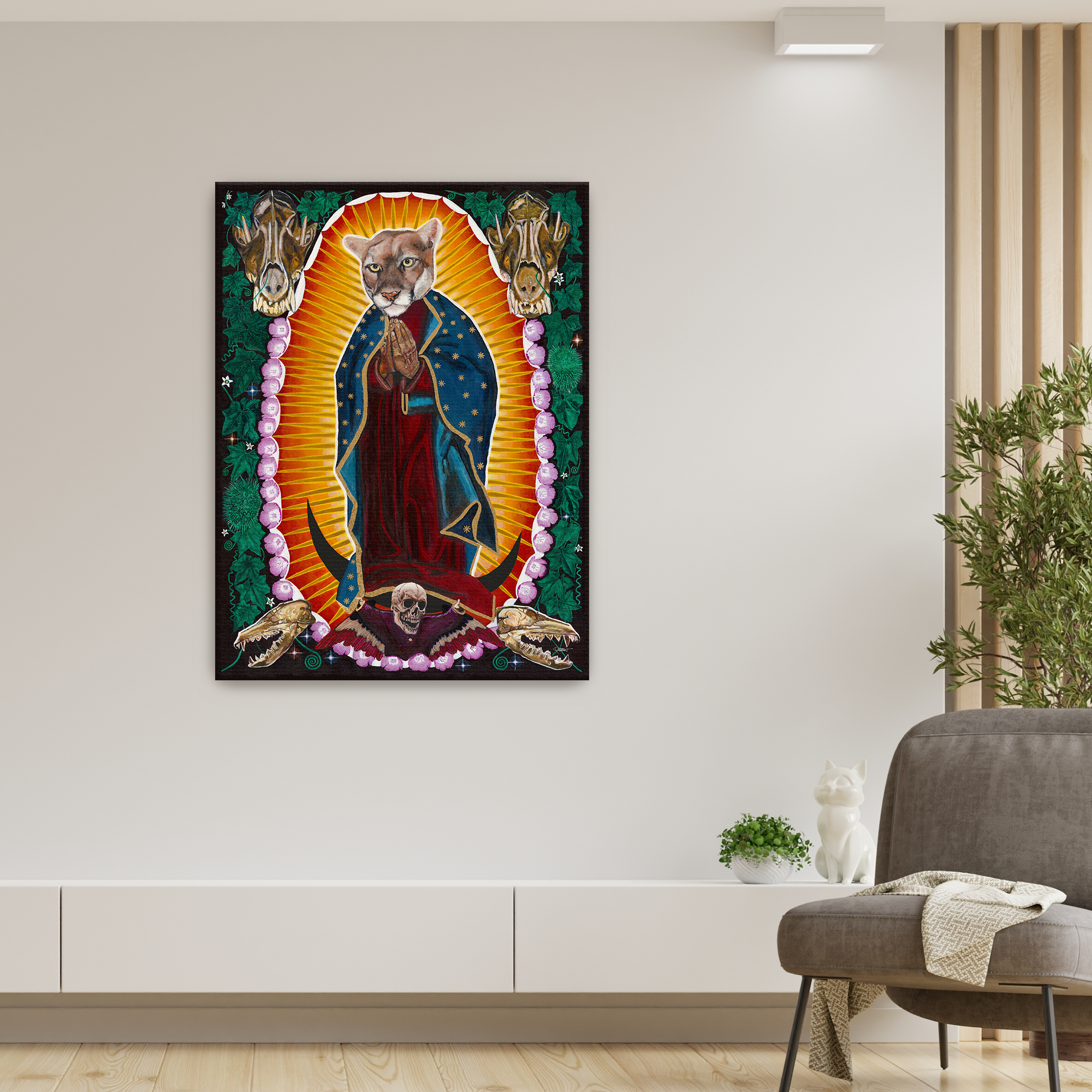Canvas Only “P22 El Virgen de Hollywood”
Stretched-Canvas Print
The “Virgin of Hollywood” presents the famous mountain lion, P22, as an iconic image representing his cultural impact on the urban-wild ecosystem all around the world. Native wild cucumber vines and clarkia flowers frame the image.
Stretched-Canvas Print
The “Virgin of Hollywood” presents the famous mountain lion, P22, as an iconic image representing his cultural impact on the urban-wild ecosystem all around the world. Native wild cucumber vines and clarkia flowers frame the image.
Stretched-Canvas Print
The “Virgin of Hollywood” presents the famous mountain lion, P22, as an iconic image representing his cultural impact on the urban-wild ecosystem all around the world. Native wild cucumber vines and clarkia flowers frame the image.
Learn more about the “P-22: Virgin of Hollywood.”


